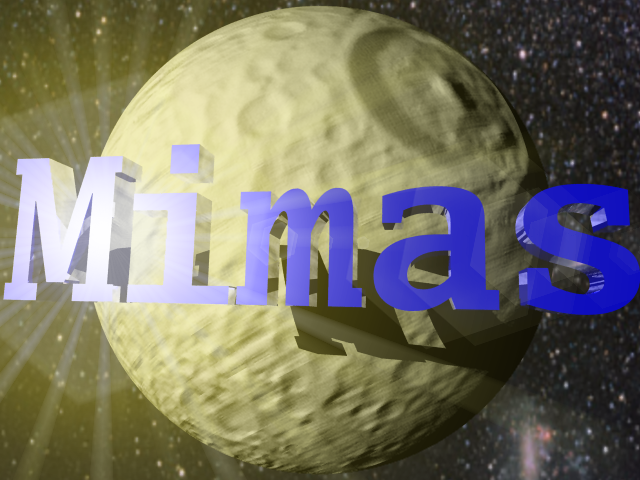Mimas
m (→Software Engineering) |
m (→Demonstrations) |
||
| Line 56: | Line 56: | ||
* [[Mimas Surveilance Demonstration|Camera surveilance]] | * [[Mimas Surveilance Demonstration|Camera surveilance]] | ||
* [[Mimas Microscope Control|Microscope control]] | * [[Mimas Microscope Control|Microscope control]] | ||
| − | * [[Sugar Pushing]] | + | * [[MiCRoN Microscope Environment|Sugar Pushing]] |
* [[Mimas Depth from Focus|Depth from Focus]] | * [[Mimas Depth from Focus|Depth from Focus]] | ||
* [[Mimas Registration of TEM images|Registration of TEM images]] | * [[Mimas Registration of TEM images|Registration of TEM images]] | ||
Revision as of 15:14, 4 January 2006
Contents |
Introduction
Mimas Toolkit is a C++ real-time computer vision toolkit. It is easy to use and includes tools for edge detection, corner detection, various filters, optic flow, tracking, blob analysis, Web cam tools for real-time applications, and much more. It also includes many implementations of traditional algorithms such as Canny. It was developed for GNU/Linux but as the GUI is largely separate, porting to other platforms should be straightforward.
Announcements
Mimas-1.4
Mimas-1.4 was released on Nov 21th 2005.
- Don't run the mesa example on NVidia cards, as it crashes NVidia's Xorg-servers at the moment :(
- Support for firewire digital cameras (accessed using libdc1394)
- shift and rotation estimation using the fourier transform
Mimas-1.3
Mimas-1.3 was released on Jul 29th 2005.
Release Notes
- No rpm-files are provided this time.
- "make install" now will install documentation and the compiled examples under /usr/share/doc/mimas-devel-1.3/
Change log
Notable changes include:
- Convolution for n-dimensional arrays and images and faster LSI-filters have been implemented.
- Operators for images have been added (f.e. "image3=(image1-image2)*3.0").
- 2D-image-iterators have been implemented.
- Support for mesa offscreen- and onscreen-rendering has been added.
- Object-recognition using moments was implemented.
Mimas-1.2
Mimas-1.2 released on Feb 28th 2005.
Release Notes
- The lib*.so-files have been moved to the rpm-devel-package. This is a bug-fix, which also resolved the problem with superfluous dependencies. The rpm-packages are for Mandrake 10.0 only.
Change Log
- type-traits for pixel-conversion
- new grabber class (video4linux)
- introduced boost::numeric::ublas-classes
- added wrappers for xml-library Xalan-C
- iterative pose-estimation for 3D-correspondences
Demonstrations
- Ascii-art using mimas and aalib.
- Camera surveilance
- Microscope control
- Sugar Pushing
- Depth from Focus
- Registration of TEM images
- Gradient Based Motion Estimation
The demonstrations are not part of the mimas-download!
Functionality
Software Engineering
Mimas is using state-of-the-art software engineering. A variety of open-source tools and libraries is being used to develop Mimas:
- Qt: The Qt-library developed by Trolltech is used for implementing graphical user interfaces and to save and load images.
- Mesa: Mesa is used to utilise hardware acceleration for displaying graphical primitives.
- STL: The software is making extensive use of the abstract data types provided by the Standard Template Library
- Boost: The Boost Library offers smart pointers to do exception safe programming, multi-dimensional arrays, template meta-programming, abstract data types for linear algebra and many other programming concepts. The Boost library is going to be part of a future C++ standard.
- Xalan-C and Xerces-C: These are the XML-related libraries of the Apache Software Foundation. They can be considered as the most complete implementations of the XML (extended markup language), XSD (XML schema description) and Xpath (XML path) standards.
- doxygen: The doxygen documentation system extracts inline-documentation from the C++ source code.
- popt': The popt-library was used to implement command-line interfaces.
- cvs and tla: For doing version control cvs and later tla was used.
- autoconf, automake and make: This standard Linux build-tools are used to configure and perform the build of the software on various distributions of the Linux operating system.
- ssh/scp/rsync: The remote shell ssh and the file system synchronisation tool rsync allow to upload, compile and test the software on a remote computer with public internet address.
